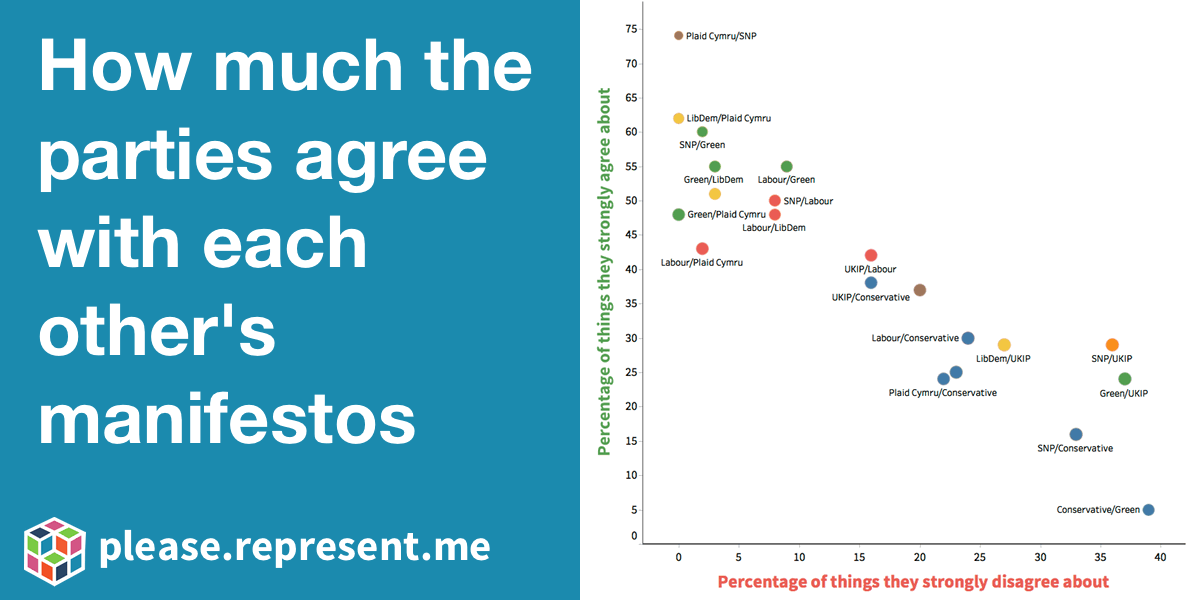During the election campaign, we analysed the main party manifestos across over 160 statements and policies. The purpose: to help voters find their best match and have their say on the key issues. In doing so we could also show how much the parties agreed or disagreed with each other. You can compare them individually here.
In the graph below each dot is two parties. Top left shows high agreement, bottom right shows strong disagreement. The bigger the dot the more issues we could compare.

A hung Parliament is where no one party has an overall majority. The maths isn’t quite as straightforward as you’d think, even if a party has more seats than anyone else. There are two key reasons for this. Irish Republican party, Sinn Fein, do not attend or vote in Westminster, this lessens the number of seats over all. Secondly, there are more left of centre parties than right-of-centre. If enough left of centre parties can work together it makes it harder for a Conservative government to pass bills and legislation. Hence why it’s good to see how much and where each party agrees.
What this graph doesn’t show is the Northern Irish parties, including the DUP and UUP who are both right of centre, Unionists supportive of the Conservative party. The UUP lost their only two seats in the election and the DUP gained two seats taking their total to 10. The Conservatives needed 326 seats to win, they have 316. So even with help from the DUP they would only have a majority of 1. The BBC has a good break down of the results.
You can still participate if you’d like to have your say on the issues and guide the new MPs towards the world you’d like to see. We will be sending the results to all the new MPs in the next few weeks to show what voters care about in detail, so your voice DOES count:

Leave a Reply